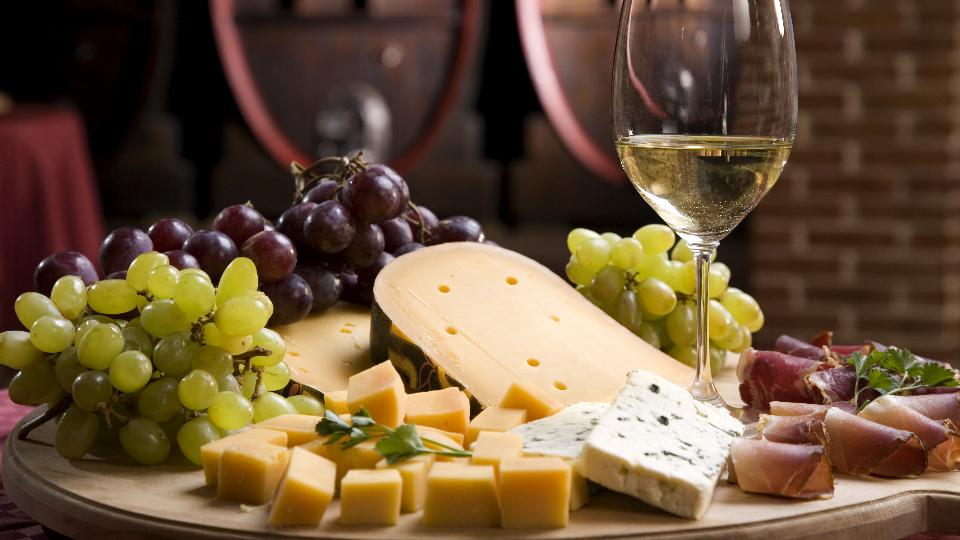 Wine Terms Glossary
Wine Terms Glossary

If you’re just starting out on your journey of wine discovery there are a vast number of terms and phrases you’ll come across that might be confusing. While this list isn’t 100% comprehensive for the true wine connoisseur, it should help you decide which wine to take a chance on, or give you a slightly better handle on wine-speak; but if you’re still struggling to decide what to bring to that party, or pair with tonight’s dinner, ask one of our friendly, knowledgeable Liquor Store Team members for help!
ABV – Stands for Alcohol By Volume, or proof (two times ABV). ABV is a term used worldwide to represent the amount of alcohol specific volume of a drink.
Apéritif – A French term that means “to open”. Usually a drink served before a meal to stimulate the appetite, or consumed on its own.
Aroma – Otherwise known as “nose”. Term for the primary scent of a wine that comes from the kind of grape used. Generally associated with flavours from fruit, flowers, and herbs.
Breathing – Also known as aeration. Letting wine breathe before consuming is believed to release more aromatic compounds, and helps soften some harsher elements, like tannins. This practice is hotly debated by wine experts, however.
Bouquet – Otherwise known as “nose”. Term for the secondary/tertiary scents of a wine that comes from the winemaking process involving fermentation (secondary) and aging (tertiary).
•Fermentation: Yeast breaks down sugar in the grapes to turn it into alcohol. Depending on the type of wine, other ingredients may be added, and multiple stages of fermentation may take place.
•Aging: The flavour of wine is further affected by aging it, and factors such as the amount of oxygen it’s exposed to, and oak. Wine is often stored in oak barrels during fermentation and aging, or oak chips are added when the wine is stored in stainless steel.
Decantation – Pouring wine into a separate bottle (decanter) to allow sediment to settle at the bottom.
Digestif – A drink served after a meal to help with digestion.
Dry – A wine that lacks sweetness. See also: sec/secco/seco.
Fortified wine – Wine that has added distill spirits, such as Port or Sherry.
Ice wine – A Canadian term for wine made from frozen grapes. The majority of Canadian ice wines are made in Ontario. In German, the term is Eiswein.
Mead – Made from fermented honey and water, instead of grape juice, mead is a wine-like alcoholic drink.
Mulled wine – Can also be known as “spiced wine”. This drink is generally made with red wine, spices, and fruit, and is served warm.
Port – A kind of sweet fortified wine, made from grapes grown in a particular region of Portugal. The process of making it involves halting fermentation to preserve some of the natural grape sugars.
Prosecco – This Italian apéritif wine, made from Prosecco grapes (the European Union renamed them Glera grapes in 2009), is named for an Italian village where the grape and wine may have originated, in the Veneto region. Prosecco is lively, dry, and fresh with light primary flavours, such as green apple, pear, and honeydew melon. The production process gives Prosecco light, invigorating bubbles that makes it a favourite for celebrations! Prosecco can be enjoyed on its own, or used in cocktails, such as the Bellini.
Sangria – Believed to be a product of Spain originally, this punch-like drink is traditionally made from red wine and chopped fruit, and sometimes other ingredients, like brandy or orange juice, are added.
Sec/Secco/Seco – Terms for dry wine in French, Italian, Spanish and Portugese.
Sommelier – Someone educated and trained in all aspects of wine, including pairings with food. Professional, certified sommeliers go through a combination of training and education, involving classes and exams that can take years.
Sparkling wine – Champagne falls under this category, but not all sparkling wine is champagne. It’s a wine with carbon dioxide in it, either from natural fermentation, or created by injecting carbon dioxide into the batch.
Sparkling wine has four levels of sweetness:
•Extra-Brut - This type of wine is already low-sugar, but the yeasts eat away at any remaining sweetness (leaving only about 0.6% sugar/litre), also resulting in a lower alcohol content.
•Brut – This very dry bubbly is the most common kind of sparkling wine, and contains about 1.5% sugar/litre.
•Extra Dry – While still not “sweet”, these wines are usually noticeably sweeter than Brut or Extra-Brut. Prosecco often falls into this category of sweetness. These wines contain about 1.2%-2% sugar/litre.
•Demi-sec – These wines have about 3.3%-5.0% sugar/litre, and can be called “half-dry” or semi-sweet. Often served as a dessert wine.
Tannins – A naturally occurring element that makes wine taste dry. Red wines tend to have higher tannins than white, but tannins can be added to wines from the wooden barrels it’s stored in. Tannins are also found in dark chocolate, tea leaves, some nuts and spices, and more.
Vintage wine – Made from grapes grown and harvested in one specific year.